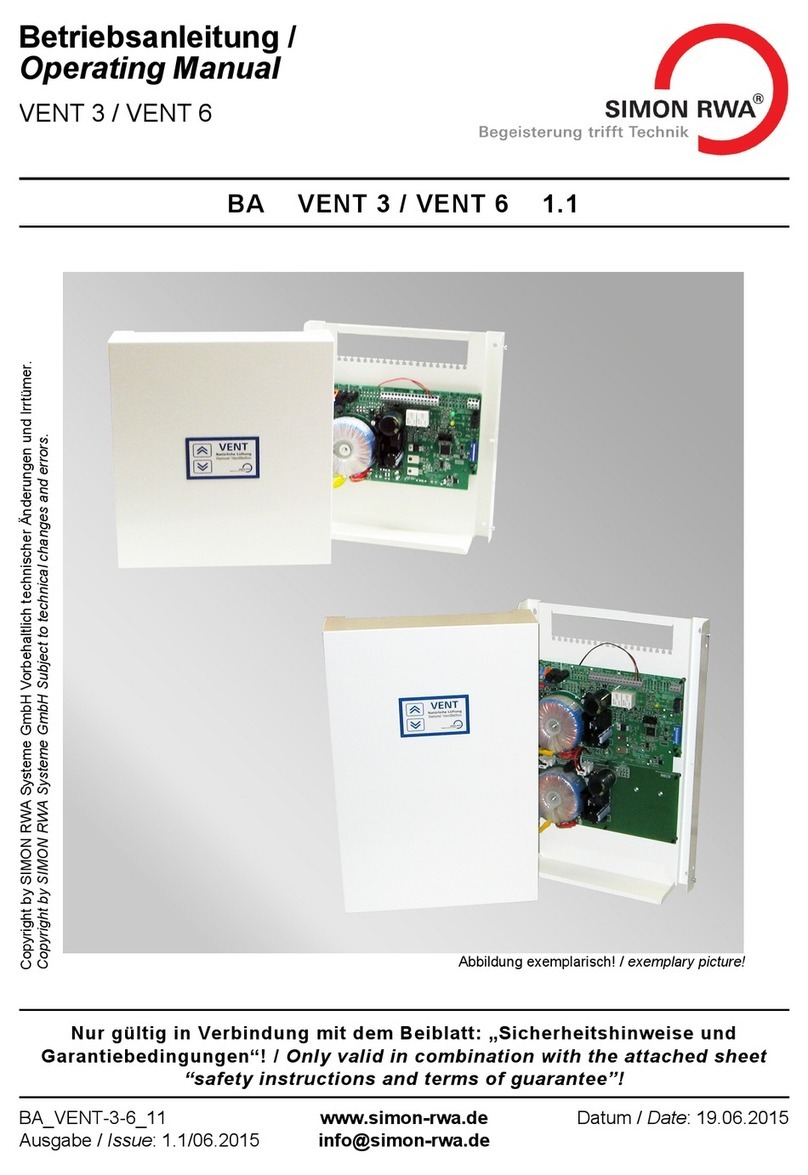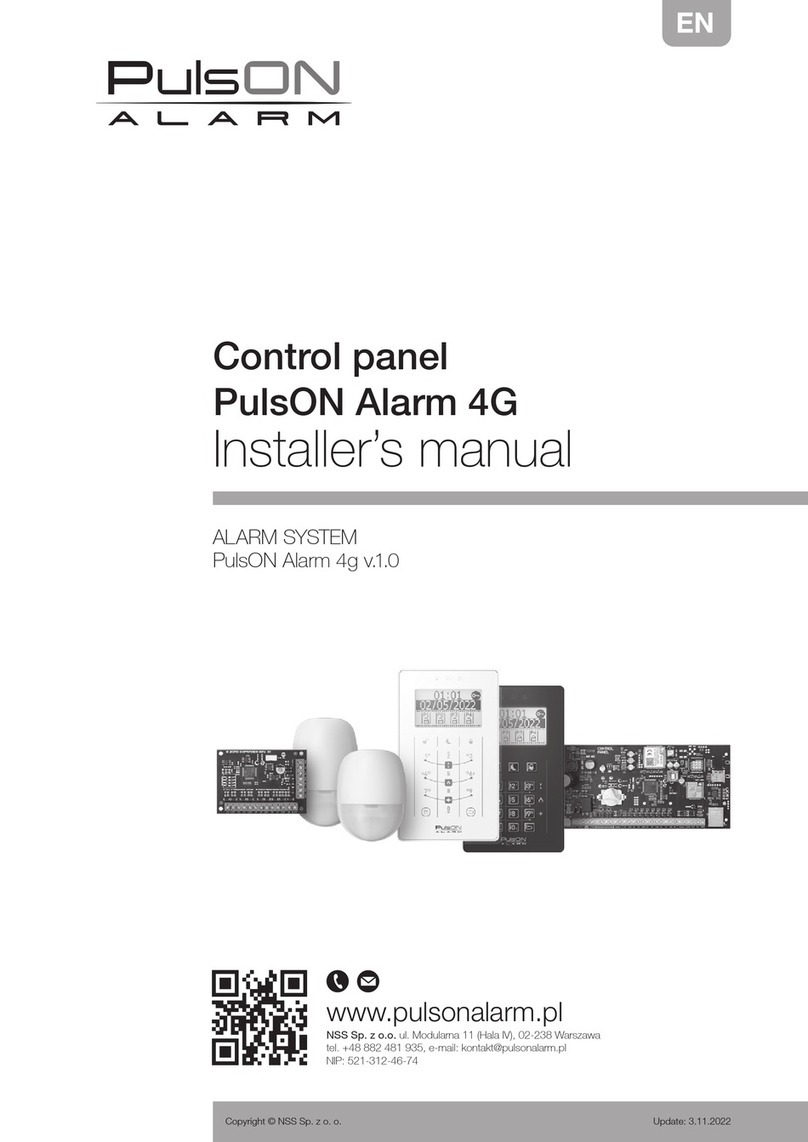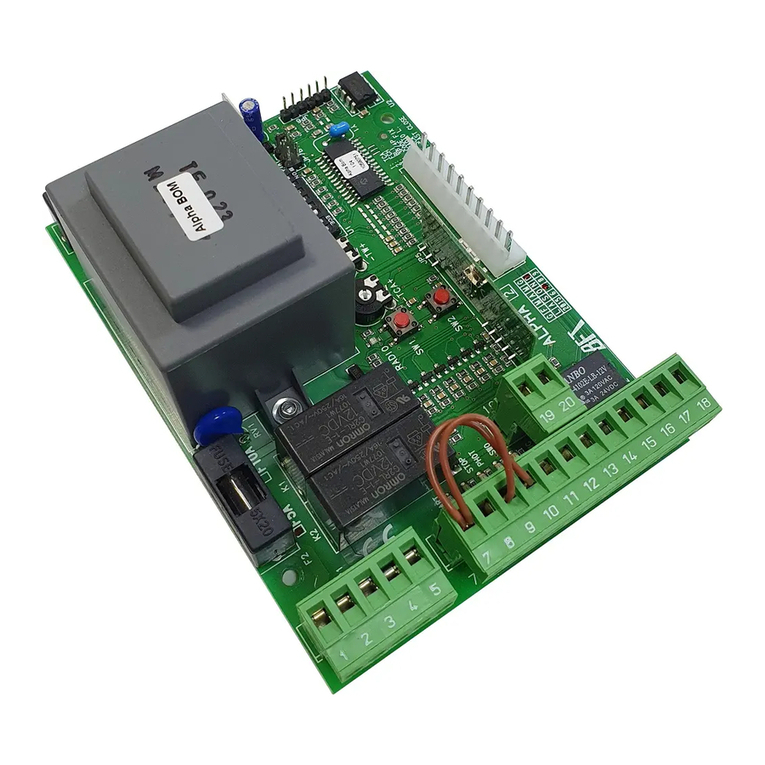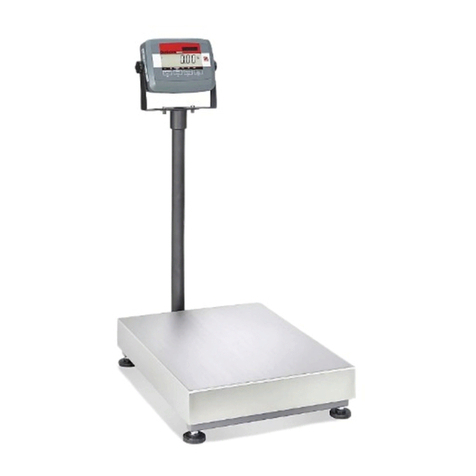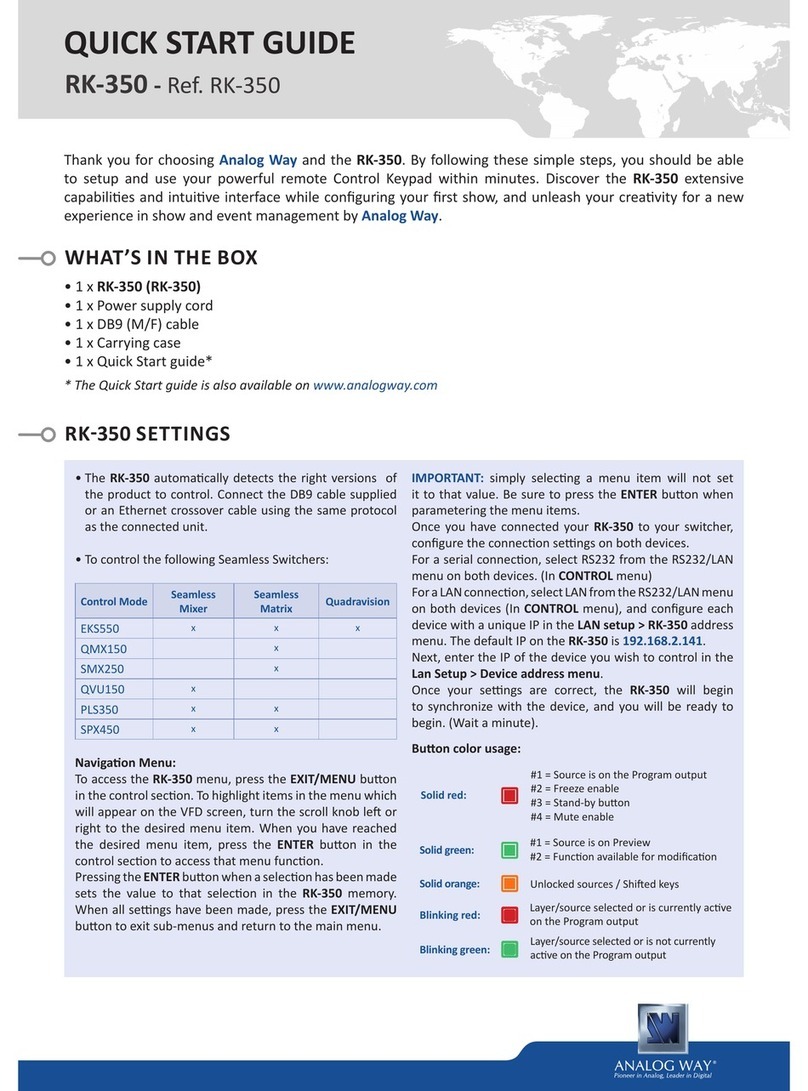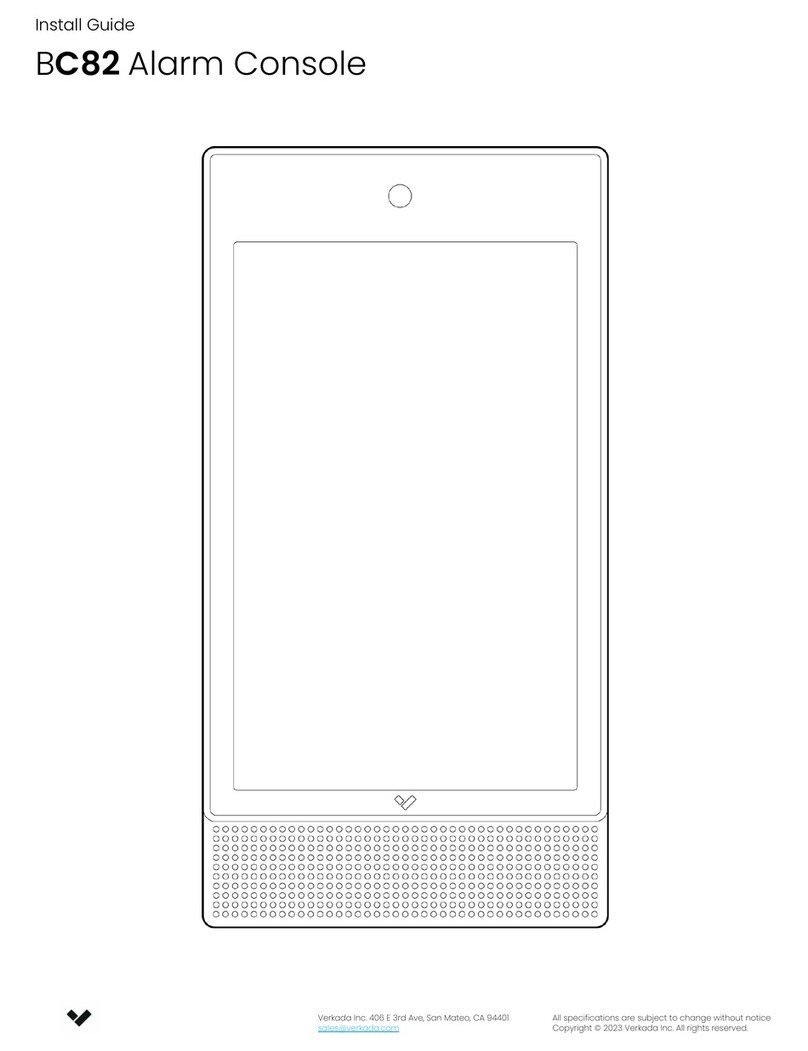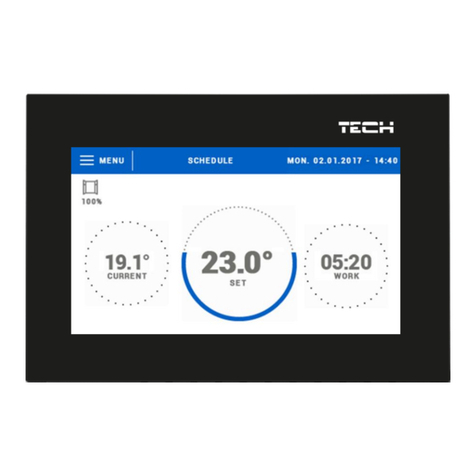SIMON RWA ESM-T/X-EV User manual

for electrical control panels in
modular design, type ESM-T/X-EV
with power supply
(current output 24 A / 48 A / 72 A)
SIMON RWA SYSTEME GmbH
Medienstrasse 8
D-94036 Passau
Phone: +49 851 98870-0
Fax: +49 851 83070
E-mail: [email protected]
Internet: http://www.simon-rwa.de
SIMON RWA Systeme
Installation manual
Edition A: 04/12

Principle set up of the power supply
Installation manual ESM-T/X-EV (24 A / 48 A / 72 A)
Page 1/20
SIMON RWA SYSTEME GmbH, Passau
ESM-T/X-EV with power supply
Continuous load
Power supply
EV 24
EV 48
EV 72
8 A
16 A
Short-time loading (3 min.)
24 A
24 A
48 A
72 A
Switching
power supply,
SNT-120 Load electronics,
LB-1**
lead-accumulator
Pb-Accu-**
Central relay module
Central ventilation module
Ventilation group module
Power supply, EV-**-(XL)
Universal technical data for the total power supply
Operating temperature range: - 5° to 40° C
Output voltage range (mains operation): 23,8 - 24,3 V
Output voltage range (emergency current mode): 20 - 26,5 V
Dublications, also in extracts, are only legal with express authorisation from SIMON RWA SYSTEME GmbH Passau
®
The electrical control panel is composed of a power supply (switching power supply, load electronics and lead accumulator
system) as well as of the devices central ventilation module, central relay module and ventilation group module. The control
panel is provided with up to three switching power supplies (unit sizes with ED 30%) depending on the particular version. The
accumulator capacity is based upon output (24 V DC, ripple < 500 mV, ripple < 5 %) and internal consumption of the control
panel.

Installation manual ESM-T/X-EV (24 A / 48 A / 72 A)
Page 2/20
SIMON RWA SYSTEME GmbH, Passau
ESM-T/X-EV with power supply
System set up of the power supply (e. g. EV-72)
Load electronics
Accu
Accu
Mains supply
230V / 1phase
OUT3 OUT2 OUT1
Monitor
Monitor
Monitor
Emergency current supply Control electronics Mains supply
Dublications, also in extracts, are only legal with express authorisation from SIMON RWA SYSTEME GmbH Passau
®

Installation manual ESM-T/X-EV (24 A / 48 A / 72 A)
Page 3/20
SIMON RWA SYSTEME GmbH, Passau
ESM-T/X-EV with power supply
Description Den. Min. Norm al Max Unit
Adjus ted nominal voltage
(IL= 300mA )
Output current (c ontinuous operation)1
EV-24 Iout 8A
EV-48 Iout 16 A
EV-72 Iout 24 A
Voltage stability in s hort ti me
operation2UTol. K -1,50 1,50 %
Output current (s hort ti me operation)
(over load durabilit y t < 3 mi n (ED30%)
EV-24
EV-48 IPeak 48 A
EV-72 IPeak 72 A
VDC
IPeak 24 A
24,25 24,30 24,35
Switching power supply
???
?????'??
N
(+)
L
(+)
PE
Netz / Mains
210 - 250 V AC
Versorgungseinheit
Supply unit
EIN
Power on
Ausgang
Output
SNT - 120
(-) (-)
Monitor
24 V / 20 A (KB 24 A)
+-
Mains input 230 V AC
Mains-
indication
Output for
load electronics
1
( ) This current applies to the complete system in continuous operation.
2
( ) This range of tolerance applies to the adjusted nominal output voltage and to the defined short time current.
The overload detection is provided by an electronic fuse in the SNT
Note! It is not permitted to exceed the
max. total current (e. g. at the power
supply, EV-72=72 A). This would lead
to an automatic regulation by the
switching power supply, SNT (that
means emergency current mode).
The switching power supply, type SNT-120 serves as the main power source and also is responsible for the mains supply of the
control panel. SNT is resistant against permanent short circuit and permanent no-load operation. Cooling occurs exlusively in
a natural way by some louvers at the housing
The mains supply for the switching power
supply has to lie within the nominal voltage
range of 195 - 265 V AC
The mains fuse protection by the customer
occurs with 16 A (fuse characteristic C or
more delayed).
The mains connection cable cross section
must be at least 0,75 mm² for each switching
power supply
Every switching power supply is provided with a monitoring output. This signals a fault in
following cases:
- mains failure (undervoltage detection U < 195 V AC)
- short-circuit resp. overload at the SNT-output
- technical defect of the SNT
- inactivity of the SNT (no energy output possible)
In case of failure the emergency current mode of the system gets triggered by the control
electronics.
Output currents from 24 A can be
realized when connecting several
switching power supplies in parallel
(max. 3 = 72 A).
Dublications, also in extracts, are only legal with express authorisation from SIMON RWA SYSTEME GmbH Passau
®

Installation manual ESM-T/X-EV (24 A / 48 A / 72 A)
Page 4/20
SIMON RWA SYSTEME GmbH, Passau
ESM-T/X-EV with power supply
Control electronics
Output for the ventilation control
of the SHEV system (e. g. for wind/rain detector)
Input SNT (+ / -) for internal supply
Monitoring signals of the individual
switching power supplies
(see page 3/11 “Monitor output”)
(+24)
(H)
Connection lead - accumulators General failure signal for forwarding
to the following control modules
LED - Indication
“fault”:
LED - indication “mains operation”:
LED on = mains operation
LED off = emergency current mode
LED off = emergency current
LED blinks = fault
LED on = normal mode
(no fault)
Charge fuse
3,15 A, delayed
Total discharge
protection (fault)
Temperature sensor
The control electronics, LB-1*0 of the power supply, EV-** is necessary for the following functions:
- Loading of the lead accu (emergency current supply)
- Monitoring of the mains operation resp. the emergency current mode
- Forwarding of status and fault to the connected control modules of the SHEV system.
Output power supply (mains- resp. emergency
current mode) of the individual components:
central ventilation-, central relay- and central
ventilation group modules
Dublications, also in extracts, are only legal with express authorisation from SIMON RWA SYSTEME GmbH Passau
®

Installation manual ESM-T/X-EV (24 A / 48 A / 72 A)
Page 5/20
SIMON RWA SYSTEME GmbH, Passau
ESM-T/X-EV with power supply
Lead accumulator system
Technical data
Output voltage per accu: 12 V DC
Total output voltage (cascade connection): 24 V DC
Nominal capacity: see the following emergency current tables
Possible
accu capacities 12 Ah 17 Ah 24 Ah 38 Ah
Power supply, EV-24
max. closed current in
emergency current
mode / I 72h
70 mA 120 mA 200 mA 340 mA
Possible
accu capacities 17 Ah 24 Ah 38 Ah
Power supply, EV-48
max. closed current in
emergency current
mode / I 72h
80 mA 170 mA 270 mA
Possible
accu capacities 24 Ah 38 Ah
Power supply, EV-72
max. closed current in
emergency current
mode / I 72h
100 mA 250 mA
mA
Closed current
Checking the closed current in the
emergency current mode. No mains
applied!
Standard - emergency current
supply
-+
Lead accu, 12V
-+
Lead accu, 12V
Load electronics, LB-1*0
The emergency current mode of the power supply, EV-** is provided by two 12 V lead accus, that are connected in cascade.
The needed capacity is defined by the individual discharging phase. Charging the lead accu is accomplished in the form of an
I/U-charge by an DC/DC-converter. That means that the charging current in the first charging cycle is limited to a constant
charge current. When the accu voltage reaches the charging end voltage, this voltage is limited by regulating the charge
current.
The closed current specified in the table
(e. g. for additional relais) may not be
exceeded. In case of emergency current
mode (max 72 h) the needed power for
operating the actuators (2 x open and 1 x
close within 3 minutes) is thereby
provided.
Dublications, also in extracts, are only legal with express authorisation from SIMON RWA SYSTEME GmbH Passau
®

Installation manual ESM-T/X-EV (24 A / 48 A / 72 A)
Page 6/20
SIMON RWA SYSTEME GmbH, Passau
ESM-T/X-EV with power supply
Measurement readings control electronics
Charge
If no charging current is indicated during
the measurement, after approx. 40
seconds a second measurement has to
be accomplished. The reason therefor is,
that after a charging cycle (8 minutes) a
break- and measure period (approx. 40
seconds) is required for the automatic
accu monitoring.
A
For example a non-connected
accumulator gets detected and
consequently a fault alarm is indicated.
The LED indication “O.K.” at the charging
electronics blinks (= fault). If the lead accu
is defective, this also is signaled by a fault
alarm.
Accu monitoring
Charging electronics, LB-1*0
Charging electronics, LB-1*0
-+
Lead - accu, 12V
-+
Lead accu, 12V
During the measurement mains voltage is applied!!
Dublications, also in extracts, are only legal with express authorisation from SIMON RWA SYSTEME GmbH Passau
®
During mains operation the emergency accu is permanently charged with an I/U-charging. In emergency current mode the
charging gets disconnected. After discharging the load electronics is able to charge 80 % of the nominal capacity within 24 h
and after another 48 h it charges the accu 100%. According to VdS 2593 resp. EN 12101-10 the charging is dependent on
temperature. Thereby the charging voltage is adjusted according to the environmental temperature.
The temperature-operated charging voltage must be within the range of
26,7 V and 28,2 V (e. g. at an environmental temperature of 20° C the
charging voltage is at approx. 27,5 V). This reading can be measured at a
charged accu (without disconnecting the accu from the charging).
In order to check the function of the
charging at a discharged accumulator
anyway, the charging current must be
measured. The reading is approx. 1,5 A.
=V
+-
-+
Lead - Accu, 12V
-+
Lead accu, 12V

Installation manual ESM-T/X-EV (24 A / 48 A / 72 A)
Page 7/20
SIMON RWA SYSTEME GmbH, Passau
ESM-T/X-EV with power supply
Ventilation control panel (connection +24)
The output +24 is required for the ventilation function of the electrical control panel. That means that all relevant ventilation
functions (e. g. wind/rain detector) are provided with power via that output.
Charge electronics, LB-1*0
1. Measurement - Current load + 24
2. Measurement - Proving the output voltage + 24
Attention:
Output voltage
at +24 - connection:
21 - 24,5 V DC
+
=V
-
Measurement readings control electronics
All three status outputs of the power supply, EV-** (+24, H, D) are provided with an overload detection. That means, if the
current exceeds a defined measurement at one of these outputs this particular output gets disconnected. After the
disconnection the control electronics proves whether there is still an overload or not. During this overload phase this fault state
is indicated as a fault indication.
Dublications, also in extracts, are only legal with express authorisation from SIMON RWA SYSTEME GmbH Passau
®
A
max. current capacity: 0,5 A
Charge electronics,
LB-1*0
Central ventilation module,
ES-WS-100
+ 24
Wire disconnected
-+
Lead accu, 12V
-+
Lead accu, 12V

Installation manual ESM-T/X-EV (24 A / 48 A / 72 A)
Page 8/20
SIMON RWA SYSTEME GmbH, Passau
ESM-T/X-EV with power supply
Charging device, mains failure and undervoltage (connection H)
The output H provides a status signal (OK / fault). This output is active in the normal mode (no fault). If the power supply, EV-**
goes into failure mode this signal gets relayed to the electrical control panel via the output H.
1
Fault indication time : 10 min.
Capacity of the
fault indication output: 70 mA
=V
-H
Indication voltage range:
0 V = fault
20 - 24 V = normal mode
Ladeelektronik,
LB-1*0
1
( ) The extended fault indication time results
from the cycle time of the accu monitoring.
Total discharge protection (connection D)
In the emergency current mode the output D is responsible for giving a signal to the electrical control unit when the total
discharging state of the accumulator is reached. Only in emergency current mode this output will cause a fault indication.
During mains operation this already will be indicated via the fault indication output H when reaching the charging end voltage of
the accu.
Fault indication time: 10 sec.
Indication capacity: 70 mA
=V
-
Indication voltage range:
0 V = fault
18 - 26,5 V = normal mode
Charging electronics,
LB-1*0
D
Dublications, also in extracts, are only legal with express authorisation from SIMON RWA SYSTEME GmbH Passau
®
Measurement readings control electronics
During the measurement no mains voltage is applied!!

Installation manual ESM-T/X-EV (24 A / 48 A / 72 A)
Page 9/20
SIMON RWA SYSTEME GmbH, Passau
ESM-T/X-EV with power supply
Fault indications and causes
Besides of the already described monitorings the power supply, EV-** carries out any more checkings, that lead to a fault or
status indication.
Fault status: Emergency current mode (in consequence of mains failure resp. undervoltage at the mains input)
Indication at the control
electronics, LB-1*0 Fault description Possible cause
LED “mains” LED “O.K.”
No accu is connected
off off Check the wiring to the accu.
Procedure
Fault status: Emergency current mode (in consequence of overcharging of a switching power supply, SNT-120)
Indication at the control
electronics, LB-1*0 Fault description Possible cause
LED “mains” LED “O.K.”
off off
Procedure
Fault status: Defective accu fuses
Fault description Possible cause Procedure
One of the accu fuses is defective
Fault status: Defective charging fuse
Fault description Possible causes Procedure
on blinks
Indication at the control
electronics, LB-1*0
LED “mains” LED “O.K.”
on blinks
Indication at the control
electronics, LB-1*0
LED “mains” LED “O.K.”
Dublications, also in extracts, are only legal with express authorisation from SIMON RWA SYSTEME GmbH Passau
®
Disconnect the output wire from the power
supply, EV-**. Afterwards the switching
power supply has to be gradually increased
again immediately (LED-indication at SNT-
120). If the accu fuse is defective the LED
O.K. at the control electronics will start to
blink. => replace the accu fuses. Control the
short circuit source before connecting the
EV-** to the SHEV system.
Check the glass fuse (3,15 A) at the control
electronics, LB-1*0. If that is defective,
replace it by a new fuse (enclosed at the
EV-**).
Emergency current mode - but the
SHEV system doesn’t work
Emergency current mode - but the
SHEV system doesn’t work. Mains
voltage (230 V) is available.
The output of the power supply, EV-
** is short circuited. The switching
power supply, SNT-120
electronically switches off the
power (the accu fuse is defective).
The SHEV system works, but the fault
indication LED ´O.K.´ blinks
Check optically, if one of the accu fuses is
defective and replace it if necessary by a new
fuse (enclosed to the EV-**)
The charging fuse is defective
(glass fuse).
The SHEV system works, but the fault
indication LED ´O.K.´blinks

Installation manual ESM-T/X-EV (24 A / 48 A / 72 A)
Page 10/20
SIMON RWA SYSTEME GmbH, Passau
ESM-T/X-EV with power supply
Fault status: The discharge end voltage can be reached by a longer emergency current mode
Fault description Possible cause
on blinks
Procedure
Fault status: Accu is defective
fault description Possible cause
on blinks
Procedure
Fault status: Overload at the status outputs +24, H and D
Fault description Possible cause
on blinks
Procedure
Indication at the control
electronics, LB-1*0
LED “mains” LED “O.K.”
Fault indications and causes
Indication at the control
electronics, LB-1*0
LED “mains” LED “O.K.”
If the lead accus have been
discharged a short time ago by a
longer emergency current mode,
in mains operation the accu
voltage could still lie below the
discharge end voltage of 21,5 V.
As long as the charging unit fails to
bring the accu voltage over 21,5 V,
the control electronics stays in the
fault indication mode.
Indication at the control
electronics, LB-1*0
LED “mains” LED “O.K.”
Dublications, also in extracts, are only legal with express authorisation from SIMON RWA SYSTEME GmbH Passau
®
In particular time intervals the
control electronics, LB-1*0 cuts off
the charge. During this time the
accu gets proved. If the accu
voltage is below 21,5 V, the control
electronic assumes that the accu is
defective. The accu couple is
charged in mains operation
permanently.
The SHEV system works, but the
fault indicataion ´O.K.´blinks.
Furthermore all the ventilation
functions are disabled.
One of the status outputs ´+24´,
´H´ or ´D´ are overcharged resp.
short circuited.
Disconnect all status outputs from the
control electronics, LB-1*0. If the fault
indication goes out immediately, it must be
proved which wire causes the fault by
connnecting successively every single
status wire. The charge at the output +24
may not be higher than 500mA and at the
outputs H and D it may not exceed 70mA.
In order to distinguish whether the accu is
simply discharged or if it is defective, you just
need to dis- and reconnect the accu couple
(5 s). Then the fault indication should go out
and stay out (wait 10 minutes).
The SHEV system works, but the
fault indication LED ´O.K.´blinks.
The SHEV system works, but the
fault indication LED ´O.K.´blinks
Disconnect the accu from the control
electronics LB-1*0. Then measure the
voltage at the accu couple for about 1 min. If
the voltage is less than 21,5 V it can be
assumed, that the accu couple is defective.

Installation manual ESM-T/X-EV (24 A / 48 A / 72 A)
Page 11/20
SIMON RWA SYSTEME GmbH, Passau
ESM-T/X-EV with power supply
Fault status: Reaching the total discharge voltage (emergency current mode)
Fault description Possible cause
off off
Procedure
Fault status: Interuption of the accu wire (e. g. fault at the connection of the lead accu)
Fault description Possible cause
on blinks
Procedure
Fault status: Short circuit at the charge output resp. the accu connection
Fault description Possible cause
on blinks
Procedure
Dublications, also in extracts, are only legal with express authorisation from SIMON RWA SYSTEME GmbH Passau
®
Fault indications and causes
Indication at the control
electronics, LB-1*0
LED “mains” LED “O.K.”
Indication at the control
electronics, LB-1*0
LED “mains” LED “O.K.”
Indication at the control
electronics, LB-1*0
LED “mains” LED “O.K.”
The SHEV system is in emergency
current mode
In the emergency current mode the
accu voltage is monitored and
proved. If the accu is totally
discharged (Uaccu < 20 V), the
status output D gets deactivated.
Disconnect the accu from the control
electronics LB-1*0. Measure the voltage at
the accu couple after about 1 min. If the
voltage is less than 20 V the accu couple is
totally discharged. The accu has to be
charged elsewhere by a particular charging
process.
(Please consultate the technical customer
service of SIMON RWA Systeme GmbH)
The SHEV system works, but the fault
indication LED ´O.K.´ blinks
The charging connection of the
power supply, EV-** has a short
circuit protection. If a short circuit at
the charging connection is caused,
the control electronics cuts-off the
charging output.
The charging circuit of the power supply is
therefore not defective. If you now reconnect
the accu the control electronics detects this
and continues charging (fault indication goes
out).
The SHEV system works, but the fault
indication LED ´O.K.´ blinks
In particular time intervals it is proved
whether an accu is connected. This
proving is accomplished at each
connected ciruit. That means that at
an EV-** all accu connection have to
be wired.
Check, if the required accu connections are
available. Consequently should be
checked, if all connections have the right
contact.

Central ventilation module, type ES-WS-100
This device with centric ventilation functioin is an
inherent part of the modular technique and is installed
in electrical control panels as standard.
yellow LED “WTS” for WTS/WS active
fixed ribbon cable
Terminal for maintenance module
green LED “OK” = ready for use
E_
V=
21 - 24,5 V (only at mains)
2
At the terminals a wind/rain combination, a wind or a rain detector can be
connected. The clamp “E” supplies the supply voltage for the heater and the electronics
of the detector. “E” is a plus potential, that is only impressed when the control unit is
supplied with mains voltage. In accu mode this function gets deactivated automatically.
ULZ LA
-ETerminals for Wind-/Rain detector
and central ventilation button
2
Connection ES-WS-100
Terminal for central ventilation button
U_
V=
at least 21 V (only at mains)
(only when “wind/rain detector not triggered”)
LZ _
V=
21 V (only at “wind/rain” or closing demand
via central ventilation button)
ULZ LA
-E
2
Connection ES-WS-100
Installation manual ESM-T/X-EV (24 A / 48 A / 72 A)
Page 12/20
SIMON RWA SYSTEME GmbH, Passau
ESM-T/X-EV with power supply
The plus potential comes back from the detector via the clamp “U” into
the control unit and supplies the connected ventilation button (clamp “T”).
If no detector is connected please bridge between “U” and “E”!
In case of triggering via the SHEV alarm of the particular SHEV group the
clamps “T”, “LZ” and “LA” of all ventilation groups of this SHEV group get
disabled and the detector is without function.
When the detector is triggered the plus potential of the output “E” is connected to the
clamp “LZ” and the clamp “U” is zero potential then. The control unit causes that the
connected actuators close. Connecting has to occur according to the diagram.
Other detectors than the original detectors of Simon RWA Systeme may not be
applied. The lines towards the detector are not monitored.
Dublications, also in extracts, are only legal with express authorisation from SIMON RWA SYSTEME GmbH Passau
®
The terminal for the central ventilation button supplies a plus potential
when the wind/rain detector is not triggered and there is no mains failure. Connecting the
potential to the clamps “LZ” or “LA” cause a central “close” or “open” function of the
connected actuators of every ventilation group. When both clamps are connected with
“U”, the actuators stop and all position indicators go out!
at the clamp “U”

red LED “RWA” = RWA (=SHEV triggered)
green LED “FTZ” = failure free button loop
green LED “RM” = failure free
smoke detector loop
green LED “BMZ” = failure free contact loop
green LED “OK” = this SHEV system and all ventilatilation
groups are ready for use (collective
failure indication)
yellow LED “OPEN” = open command to all vent groups
yellow LED “CLOSE” = close command to all vent groups
2
3
DIP- switches
3
4
5
Terminal ribbon cable
Terminal ribbon cable
WRES
RES
SHEV
CLOSE
OPEN
BMZ
RM
FTZ
ONOFF Adjustment by the customer “ON”. May only be changed at VdS-systems and
only after consultation with the manufactor.
The DIP switches are factory-adjusted in a way so that a failure in the
monitoring loops causes an automatic triggering of the SHEV alarm. If
the operator wants to cause simply a failure indication instead of an auto-
matic triggering he has to throw the DIP switches of the particular
loops leftwards.
Central relay module, type ES-ZL-100
* 270 k 12/04)(until manufacture year
Installation manual ESM-T/X-EV (24 A / 48 A / 72 A)
Page 13/20
SIMON RWA SYSTEME GmbH, Passau
ESM-T/X-EV with power supply
For each SHEV group an ES-ZL-100 module is
required. This module controls all commands
relevant for SHEVs like “OPEN” via the break glass
button or the automatic triggers like smoke detector
and also the dry opener contact of the BMZ. These
lines are connected via a 27 k * resistor and closed
current monitored. In case of short circuit or
interruption the SHEV groups get triggered
automatically
Adjustment by the customer “ON”. May only be changed at VdS-systems and
only after consultation with the manufactor.
Adjustment by the customer “ON”. May only be changed at VdS-systems and
only after consultation with the manufactor.
Adjustment by the customer “ON”. May only be changed at VdS-systems and
only after consultation with the manufactor.
Attention! The adjustments by the
customer may only be changed by
authorized qualified personell. False
adjustments of the DIP switches can lead
to a malfunction of the SHEV system!
Dublications, also in extracts, are only legal with express authorisation from SIMON RWA SYSTEME GmbH Passau
®

_
µA=
B1
value to be measured:
0,8 - 1 mA (until date of manufacture 12/04, value 80 - 100 µA)
Button loop
27 kV*
Y_
at least 21 V (Mains)
at least 18 V (Accu)
V=
OK _
V=
21 V
3OK RAYB1
M-RZ Break glass button terminal
M_
V=
at least 20 V (Mains)
at least 18 V (Accu)
Connection central relay module,
type ES-ZL-100
Installation manual ESM-T/X-EV (24 A / 48 A / 72 A)
Page 14/20
SIMON RWA SYSTEME GmbH, Passau
ESM-T/X-EV with power supply
Dublications, also in extracts, are only legal with express authorisation from SIMON RWA SYSTEME GmbH Passau
®
The minus potential of the minus clamp (-) is considered to be a basis for all
terminals for signalizing. The clamp “OK” supplies a plus potential at least 21 V
if there is no failure at the control unit (complete SHEV group). Between these
clamps hangs the green LED of the main station. The clamp “OK” (Y”) is
fused by a PTC (approx. 100 mA - never connect more than 1 main station).
OK
“Y” provides a plus potential for failure indication. This signal is a permanent signal,
that is turned into a blink signal by an electronics at the main station’s circuit board.
Between these clamps hangs a yellow diode of the main station for failure
indicating. Attention!! “Y” is supplied by emergency current.
“M” provides a plus potential at “SHEV OPEN” (HE, RM, TH,
BMZ). Between these clamps hangs the LED-indication
“triggering” of the stations (HE 075/076). These output is also
fused with a PTC and is able to supply max 8 OPEN-indications of the
stations in parallel. If more than 8 break glass buttons are connected the
output “M” breaks down to an undefinable value. Never
connect more than one main and seven slave stations. If some
additional stations are required an auxiliary relay (HR-195) is necessary.
Attention!!
“B1” provides the plus potential for the closed current loop, wherewith the button lines of
the electrical break glass buttons are monitored. The current of this output is limited to 100
mA by a PTC. The closed current tolerance lies between 50 µA and 5 mA. If the closed
current value doesn’t lie within this range, the control unit will be triggering. The end
resistor has to be added to the button line at the last terminal (like shown in the diagrams).
If no buttons shall be connected the resistor needs to be installed directly into the control
unit (delivery state). This loop is monitored for failure and short circuit. If the end
resistor stays in the control unit, triggering via the break glass button (HE 075/076) will be
not possible. Alarm willnot be set.
Attention!!
* 270 k 12/04)(until date of manufacture
When the potential of terminal “B1” is clamped onto the terminal RZ, this will cause a RESET of the system and
consequently a closing of the connected acutators. The plus potential of the terminals “B2” and “B3” thereby get
reseted (= smoke detector - reset). This function is clamped at the button CLOSE/RESET (terminals “8” and “9”) at
the main stations. The “Reset” - button in the control panel has the same function. When a SHEV alarm
has been triggered all other functions are disabled, only by RESETTING other functions like wind and rain detector
or vent button will be reactivated. The terminal RA is not relevant at “normal” operation of the control unit.
Attention!!

Connection central relay module,
type ES-ZL-100
4
5
RA
B2 -Smoke detector terminal
RA
B3 -Terminal for an opener contact by the contractor
RESET-button
The electrical control panel, type ESM-T/X has an integrated RESET-
button placed in the central relay module, type ES-ZL-100. Pressing
this button effects the following:
1. the closed current loops at “B2” and “B3” is volt-free during pressing
the button.
2. all connected actuators close and
3. if no failures or triggerings are setted, the system stays closed until
the next open command.
4. In accu mode the reset button holds deadman function,
after pressing all outputs are volt-free again (actuators) and the
closed current consumption is minimized except the monitoring loop
In contrast to the reset button in the HE 075 this one can not be passed (independent from switch adjustment “WRES”).
The RESET command is active as long as the button is pressed.
Installation manual ESM-T/X-EV (24 A / 48 A / 72 A)
Page 15/20
SIMON RWA SYSTEME GmbH, Passau
ESM-T/X-EV with power supply
Dublications, also in extracts, are only legal with express authorisation from SIMON RWA SYSTEME GmbH Passau
®
The terminal “B2” provides as well as the terminal “B1” a plus potential, that with end resistor connected between
“B2” and minus results a defined closed current loop. The end resistor closes the circuit loop at the last smoke
detector (see diagram). Don’t connect more than max. 8 smoke detectors type RM-521 or RM 2860. If no smoke
detectors are connected the resistor is connected directly into the control unit (delivery state!). RA is without function
at a standard connection. Closed current tolerance see at “B1”.
The terminal for a contact (opener) by the contractor is realized by the terminals “B3” and “-”. The principle of
monitoring is identical with the other monitoring loops of the terminals “B1” and “B2”. At the terminal “B3” also for
example a thermo detector with dry contact can be connected (see diagram). If no contacts are connected the end
resistor stays connected in the control unit (delivery state!) RA is not connected.

Ventilation group module, type ES-MR-100
LZ
LA
Z PAR
A PAR
Z TOT
A TOT
END
DIP-switches (adjustment samples)
ON
OFF
Central vent command in closing direction is active for this vent group.
Parallel connection of this vent group module in closing direction to the
foregoing vent group
Dead man operation for vent function in “close” switched off.
Switch not used
Closes the monitoring loop and consequently the collective failure indication
of the SHEV group (must be in “EIN” position at the last vent module). All
groups between must be switched off.
For each ventilation group a ES-MR-100 module is
necessary. This module supplies the connected actuators
with voltage in pole changing technique. The max. output
current is 12 A per module.
16
7
6
green LED “OK” = ready for use
yellow LED “OPEN” = actuators openyellow LED “CLOSE” = actuators close
(LED “OPEN/CLOSE” at the same time =
actuators stopped, e.g. by vent switch)
Connection ribbon cable
Connection ribbon cable
5A 10A
Installation manual ESM-T/X-EV (24 A / 48 A / 72 A)
Page 16/20
SIMON RWA SYSTEME GmbH, Passau
ESM-T/X-EV with power supply
Dublications, also in extracts, are only legal with express authorisation from SIMON RWA SYSTEME GmbH Passau
®
The actuator line is monitored for interruption by an end of
the line diode unit. The maximum cable cross section is
2,5 mm² when connected directly at the terminals. For
bigger cross sections a block terminal can be installed.
The output is fused by a delay micro fuse with 5 A resp.
10 A.
Central vent command in opening direction is active for this vent group.
Parallel connection of this vent group module in opening direction to the
foregoing vent group
Dead man operation for vent function in “open” switched off.

Connection Ventilation group module,
type ES-MR-100
Actuator output, 24 Volt DC, max. 12 A
per ES-MR-100 Short time operation. Please don’t forget to install the fuses!
Triggered or not installed fuses are indicated as failure!
Only delayed-action fuses may be applied.Attention !!
OS
V=
0,5
24 V (Mains)
6
21,5 V - 26 V (Accu)
SSGOO
6
7
The terminal for the vent switch supplies a plus potential at “T” when wind/rain detector and SHEV have not been
triggered and if there has been no mains failure. Switching the potential at “Z” or “A” causes a “close” or “open” function
of the connected actuators. If both terminals were connected with “T” the actuators would stop and all position indications
would go out!
ATZ Terminal for vent switch
The enclosed diodeblock must be installed at the last connection point as shown in
the connection diagram. If there is a failure at the line, in the main station will appear
a failure indication! If the diode block is installed in the control panel there
will be no failure indication but the actuator lines will not be monitored!
Attention!!
SO
G
µA=
M
24V
40 - 100µA
= Connection for monitoring loop -
actuator line
6
7
Notice: Do not connect contact “F” of the
actuator with “G” in the control panel. This
would cause a short circuit at the actuator
lines.
Connection for actuators
Fuses
Fuse actuator: 5 or 10 A delayed-action (at vent group module)
Only use delayed-action fuses.Attention!!
Triggering resp. a lack of this fuse is indicated as a failure
(at the specific modules of the electrical control panel and in the main station.)
Installation manual ESM-T/X-EV (24 A / 48 A / 72 A)
Page 17/20
SIMON RWA SYSTEME GmbH, Passau
ESM-T/X-EV with power supply
Dublications, also in extracts, are only legal with express authorisation from SIMON RWA SYSTEME GmbH Passau
®
Polarity changes between “S” and “O” in case of open or close. At switching
position “OPEN” “S” has plus and “O” has minus potential. At “G” the monitoring
loop is connected. If the actuator lines are without failure you can measure a
closed current in the line “G” of 40 - 100µA

Additional slots
Ready for use only for this vent group
resp. if not failure indication (supply, fuses, line monitoring).
Slot 2 and/or 3:
(at the central relay module, type ES-ZL-100)
Slot 3:
(at the central relay module, type ES-ZL-100)
Slot 1:
(at the vent group module,
type ES-MR-100)
Install the repeat module at slot 3.
Connection or adjustment is not necessary.
=
=
=
=
=
Smoke exhaust triggered
Command “OPEN” for daily vent and
smoke exhaust
Command “CLOSE” for daily vent, wind/rain active
and smoke exhaust reset
“Mains OK” or if not “Mains failure”
Control panel ready for use or if not:
“collective failure indication” (complete SHEV group,
central vent + all vent groups as well as all appropriate supplies)
wind/rain detector active or central vent switch active
=
SHEV
OPEN
CLOSE
MAINS
OK
WTS
1 2 3 4 5 6
ON
OFF Auxiliary relay module, type HR-195
Repeat module
Auxiliary relay module, type HR-195
=Smoke exhaust triggered
SHEV
1
ON
OFF
=
=
=
=
Command “OPEN”, for daily vent and
smoke exhaust
Command “CLOSE”, for daily vent, wind/rain active
and smoke exhaust reset
“Mains OK”, or if not “Mains failure” only for supply of this group)
Wind/rain detector or central vent switch active
=
OPEN
CLOSE
MAINS
OK
WTS
2 3 4 5 6
DIP-Switch (ES-ZL-100)
WRES
RES
SHEV
CLOSE
OPEN
BMZ
RM
FTZ
ONOFF
When the repeat module is used adjust the DIP switch to “OFF”
Installation manual ESM-T/X-EV (24 A / 48 A / 72 A)
Page 18/20
SIMON RWA SYSTEME GmbH, Passau
ESM-T/X-EV with power supply
Dublications, also in extracts, are only legal with express authorisation from SIMON RWA SYSTEME GmbH Passau
®

Debugging
Please check voltage in the following sequence:
Check voltage!
L1 N
230 V~
Only with “mains”
1.
If the voltage value now complies with the datas at the data sheet, the power consumption of one of the consuming devices
connected to the outputs “E” , is too high. Reconnect and recheck the particular output
voltage. Check the consuming devices for quantity and faultless function. If the voltage values even after disconnecting
still differ from the declared values, the control panel has to be checked in the factory.
“U”, “B1”, “B2”, “Y”, “OK”, “M” or “B3”
E-
V=
2.
only with “mains”
at least 21 V
only at “mains”
at least 21 V
SO
V=
3.
only at “OPEN” or “CLOSE”
24 V (Mains)
60,5
21,5 - 26 V (Accu)
B1 _
V=
4.
B2 _
V=
5.
B3 _
V=
6.
at “mains” and “Accu”
at least 20 V (Mains)
at least 18 V (Accu)
7.
OK _
V=
Please check the fuses if the voltage differed from the
datas of this manual. Disconnect all power consuming
devices and close all closed circuit loops in the control
panel with resistors and diode block.
Attention!! Mains failure causes a failure indication!
The failure causes an activation of the SHEV system!
SSG
OO
Example:
Output actuators
8. 9.
at “mains” and “accu”
at least 21 V (Mains)
at least 18 V (Accu)
in case of failure only only when SHEV triggered
Y_
V=
M_
V=
at “mains” and “akku”
at least 20 V (Mains)
at least 18 V (Accu)
Installation manual ESM-T/X-EV (24 A / 48 A / 72 A)
Page 19/20
SIMON RWA SYSTEME GmbH, Passau
ESM-T/X-EV with power supply
Dublications, also in extracts, are only legal with express authorisation from SIMON RWA SYSTEME GmbH Passau
®
Table of contents
Other SIMON RWA Control Panel manuals
Popular Control Panel manuals by other brands
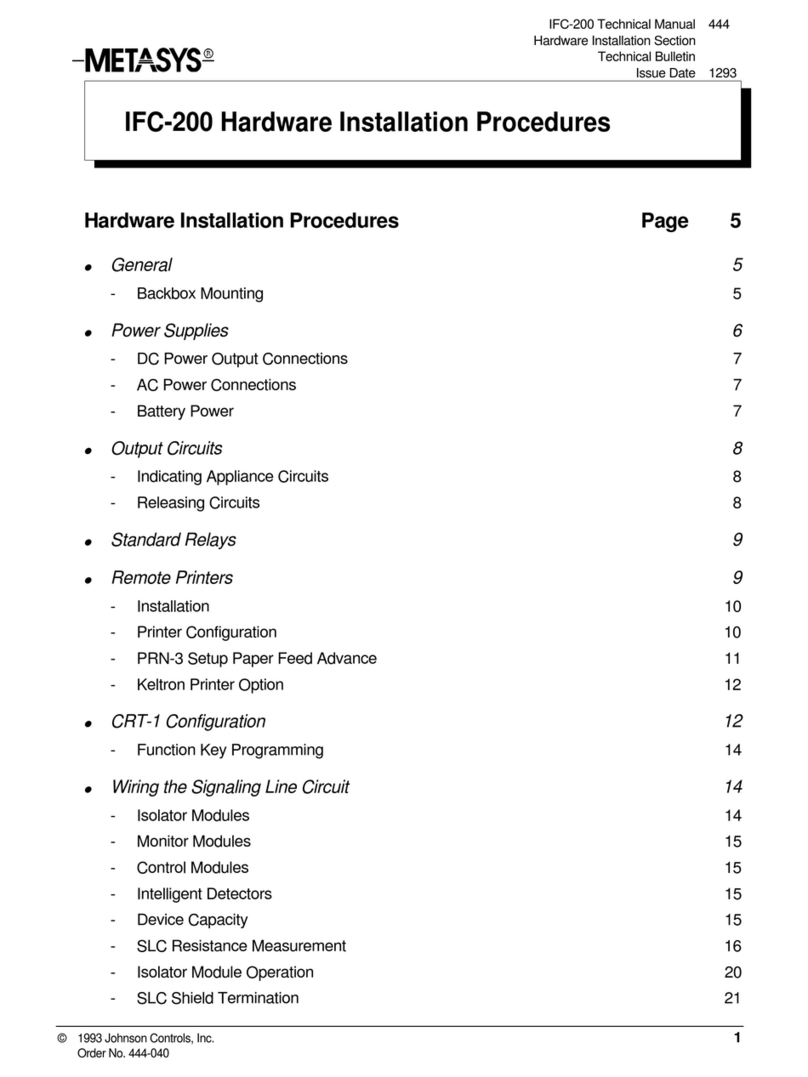
Johnson Controls
Johnson Controls IFC-200 Installation procedures
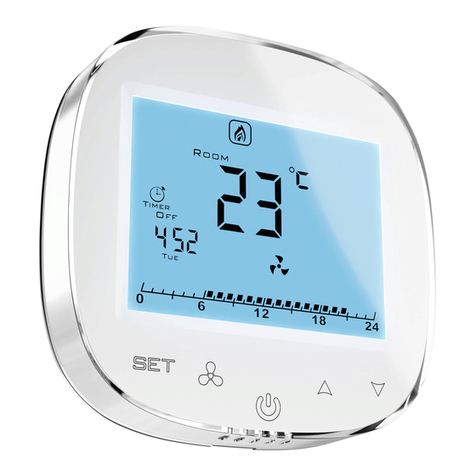
VTS Medical Systems
VTS Medical Systems HMI WING HY manual

CWSI
CWSI CP-3500D Operating and installation instruction manual
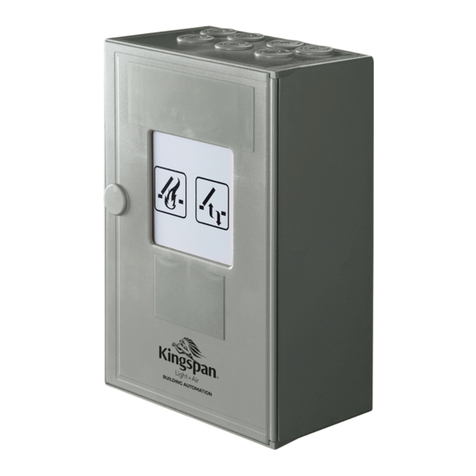
Kingspan
Kingspan SHE TRZ Plus 2A Technical information and operating instruction
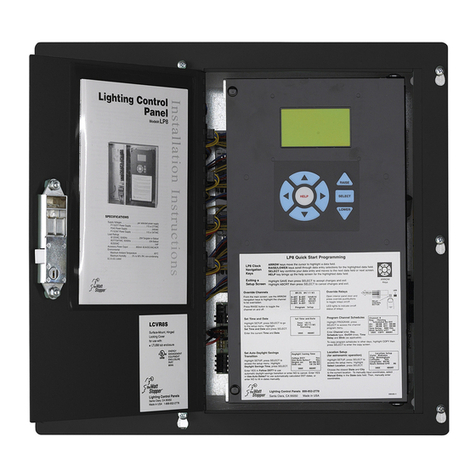
LEGRAND
LEGRAND Wattstopper LP8 quick start guide
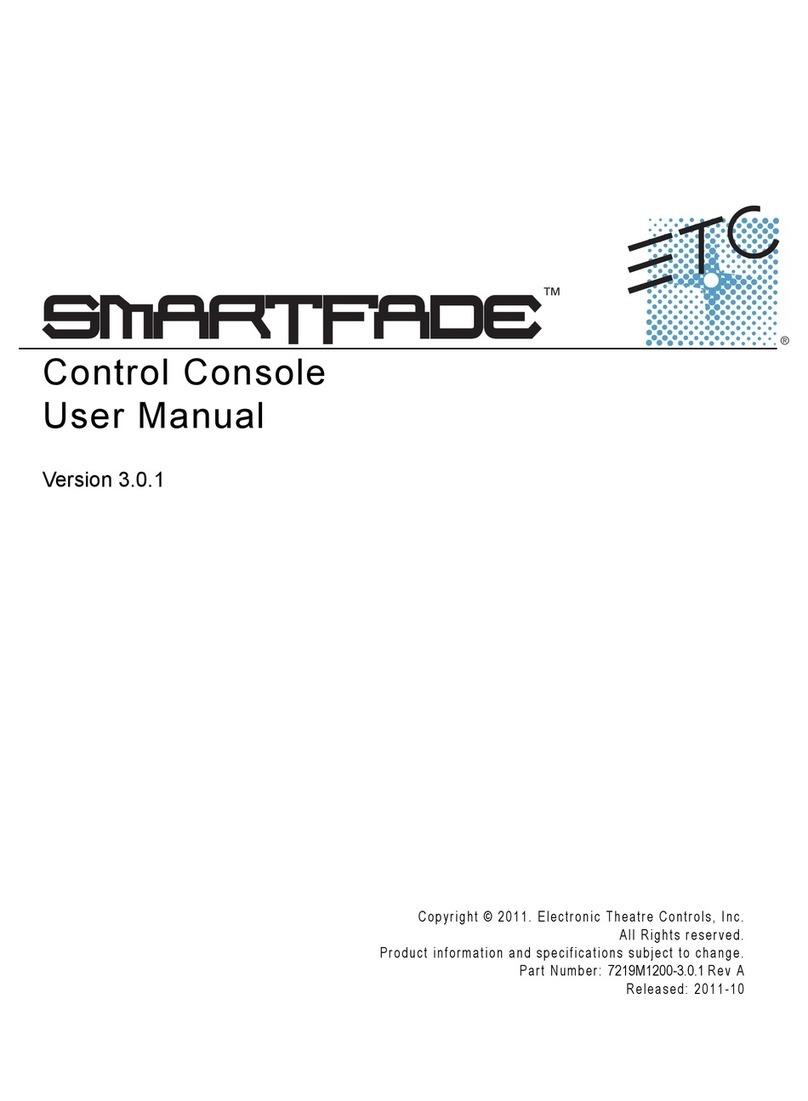
ETC
ETC SmartFade user manual

ILLUMINO IGNIS
ILLUMINO IGNIS SMARTWIRE quick start guide
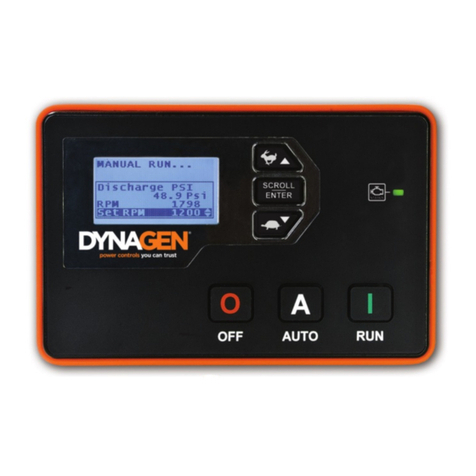
DynaGen
DynaGen Tough Series user manual

Lofa
Lofa CANplus 750 Operation and Troubleshooting
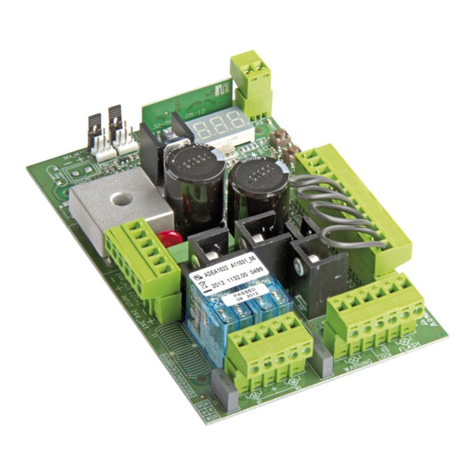
Dea
Dea NET24N Operating instructions and warnings
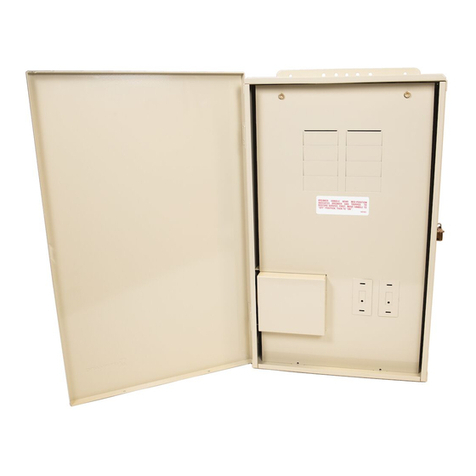
Intermatic
Intermatic P40000 Series Installation, operation & service manual
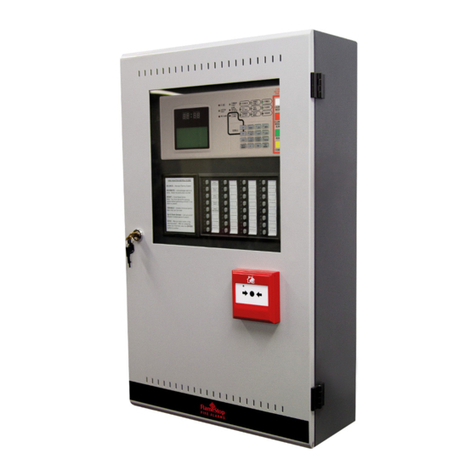
FlameStop
FlameStop PFS200-2 Installation and operation manual
